Many musical influences have flowed through the rural South over many generations, like rivers that intersect, merge and diverge again. Country folks went to town and came back with strange tales and new tunes. While in town they might go to a jook joint, or stop for a while to listen to a street singer. Staged theatrical and musical shows also traveled through rural areas, including minstrels, medicine shows, and vaudeville and tent shows. These productions featured a wide variety of genres, and were training grounds as well as stylistic expanders for country performers. Eventually there were radio stations and recordings: first cylinders, then big breakable discs. Electrical recording, which replaced singing into a lo-fi horn, came in 1925—as did Nashville’s WSM Grand Ole Opry, on the heels of Chicago’s WLS National Barn Dance.
The centuries-old cultural interplay continued. Consider again the banjo: the most celebrated White banjo players of the early twentieth century all had contact with Black players. Back in the first half of the nineteenth century, near the intersection of Virginia, North Carolina, and Tennessee, lived minstrel man Joel Sweeney, the Black Knoxville banjoists, and the families that would later produce 20th century players Hobart Smith and Clarence Ashley. Smith recalled several Black banjoists living in the area during his childhood around 1910; he picked up some style from black fiddler Jim Spenser. Ashley’s family had come from Ireland to eastern Virginia and later to the mountains. Frank Proffitt, who both made and played banjoes, was influenced by his neighbor Dave Thompson, a Black player near Sugar Grove, NC. Thompson and Ashley both transferred an a cappella British ballad to the banjo; they also shared tunings. Thompson’s family hosted music sessions attended often by Frank Proffitt, as well as Doc Watson.[i] We don’t think of Blacks and Whites hangin’ in the hood in the early twentieth century, but there it is.
Ralph Peer launched the era of recorded folk music: he recorded blues singer Mamie Smith in 1921 and Virginia’s Fiddlin’ John Carson in 1923, and lots, lots more. All this southern wisdom was released by the Okeh company on two separate product lines: “Race” and “Hillbilly”—these in addition to its “popular” series. These segregated categories were designed to be marketed back to the communities whence they allegedly had come; they had the effect of strengthening musical apartheid, drowning out the communication that had existed in the South for generations, and confusing the whole nation about the roots of American culture. But then, Okeh probably wouldn’t sell many Mamie Smith records at the 1925 Ku Klux Klan-sponsored fiddler’s convention.[ii]
For an example of music that was neglected and buried by commerce, we can look at the African-American string band led by John Lusk in south-central Tennessee, which was among the most popular square-dance bands around in the twenties and thirties. They played for White dances as well as Black, but were never recorded commercially. An ear-witness to a folkloric 1946 recording session tells us,
Suddenly, at the second part of the tune, the fiddle would leap into an upper octave, with a wild cry…The banjo would then play a loose and free polyphonic obligato around a rudimentary suggestion of the melody, ranging far away melodically, omitting strong downbeats, dancing a different step rhythmically—and this was most radical of all for banjo—not hitting all the upbeats and downbeats, with sudden startling gaps and hesitations…it produced a rolling syncopation like a jazz beat…It was far and away the most sophisticated square dance music we had ever heard… [iii]
John Lusk played a fiddle he got from his grandfather, a captive worker who was sent to New Orleans in the 1840s to learn his fiddling. Adult education increased his value to his master and all around him, value that was handed down to the next century.
In the early twentieth century South, White artists like Jimmie Rodgers soaked up the blues and incorporated their version of its feel into their musical style. A railroad brakeman, Rodgers learned the guitar, the banjo and the blues from Black musicians in Meridian, Mississippi, where he worked even as a boy. He later toured with a medicine show, where he learned a style in which condescension contended with imitation-as-sincere-flattery of African-American styles (kind of like what happened in rock and roll). He was a pivotal player in the merging of styles, moving away from plain singing toward ornamentation, interaction between voice and guitar, three-line blues form and bluesy melodies.[iv] He didn’t sound like Led Zeppelin, but each in their time spread a lot of White blues around to a lot of White folks.
The “blue yodel” for which Rodgers was famous, and which was so influential on other country musicians, is generally seen as a combination of Swiss yodeling and Hawaiian falsetto—both popular at the time—and the Mississippi delta blues falsetto leap, which owed a lot to earlier field hollers. [v] African-Americans were already yodeling the blues—singers like Monroe Tabor, the “Yodeling Bell Boy;” Beulah Henderson, “America’s Only Colored Lady Yodeler,” and the celebrated Charles Anderson, a “Yodler of Note.” [vi] These and many other Black blues yodelers were active from around 1905, with yodeling becoming more and more prominent in their styles after 1910.
Another influence on Rodgers was Emmett Miller, a country and jazz singer who worked for decades in blackface minstrelsy. Miller came from Macon, Georgia, and set his falsetto-break style to wax in 1924.[1] He recorded as part of the Okeh Medicine Show, and went on to work with a studio band called the Georgia Crackers that were anything but: they intermittently included jazzmen Gene Krupa, Eddie Lang, Jack Teagarden, and Tommy and Jimmy Dorsey. Hank Williams copied his version of “Lovesick Blues” from Rex Griffin, who copied his from Miller.[vii]
[1] Riley Puckett yodeled on record the same year. (Daniel 1990, 103)
To my mind, Miller is the missing link, binding together city jazz and country twang. Listening to Miller makes you feel like there is one American culture, albeit woven of diverse strands. His tunes were religiously duplicated by Bob Wills and others, making a mark on western swing, which had only a few years left in the incubator. To the extent that Miller recorded two distinct kinds of music, it was largely due to the needs or demands of recording companies. He was widely accepted by both Black and White audiences. In fact, according to Merle Haggard, he was married to a Black woman and was buried in the Black section of a Macon, Georgia cemetery, with no marker until Haggard paid for one.[viii]
When Jimmie Rodgers’ blue yodel records were released in 1928, the Black influence was unmistakable: a popular music critic of the time reviewed Rodgers’ second blue yodel record under the headline “White man singing black songs.”[ix] He was soon referring to Rodgers as a “White man gone black,”[x] and recommended that White listeners seek out African-American recordings as well because “Listening to race records is nearly the only way for White people to share the Negroes’ pleasures without bothering the Negroes.”[xi]
Rodgers did some recording with small jazz groups, even with Louis Armstrong and his wife Lillian in 1930 (Blue Yodel No. 9)—check out their enthusiastic interaction, which reveals their mutual admiration. And Howlin’ Wolf said later that Rodgers gave him his nickname when they met in the twenties.[2] His blue yodel was taken up by other Country singers including Gene Autry, Hank Snow, Ernest Tubb, Jimmie Davis, the Carter Family and the brothers Monroe, and persisted until the forties. [xii]
[2] Wolf may have been trying to imitate Rodgers’ yodel
and thus blundered into his trademark. (Lipsitz 1994, 313)
♬substitution: Listen to a traditional-style Country tune by Roy Acuff or Buck Owens; dub in a trumpet or sax for the guitar or pedal steel. Or just listen to Emmett Miller with his Cracker-Jazz band.
Jimmie Rodgers was a key influence on Gene Autry and Roy Rogers (Leonard Slye), who were taken up by Hollywood. Through the alchemy of film and TV, hillbillies were turned into cowboys, mystifying the masses for fun and profit. Coal miners and mountain villagers sprouted chaps and cowboy hats. But the music persevered, and many decades later, New Orleans R&B hero Aaron Neville would credit his yodeling style to, among others, Gene Autry and Roy Rogers.[xiii]
The influence of the blues on White country singers in the twenties was as pervasive as the influence of jazz on popular music. Take the Allen Brothers, Lee and Austin, two White blues boys from rural Tennessee, whose second record, “Chattanooga Blues” backed with “Laughin’ and Cryin’ Blues” (1927), was mistakenly issued by Columbia on its (Black) Race Record series—the New York office couldn’t tell one southern accent from another and the recording engineers in Atlanta hadn’t bothered to alert them to racial details. It is one of many such anecdotes, like that of Peggy Lee and her army fan, and Elvis, yet to come.
The Allens went on to release 34 more records, mostly in the genre then known as white blues.[xiv] White blues artists proliferated throughout the twenties and thirties: Dick Justice recorded “Cocaine” and “Brown Skin Blues;” Grand Ole Opry star Kirk McGee fiddled on “Salt Lake City Blues” and “Salty Dog Blues;” his brother Sam played “Railroad Blues” with all the “pulls, bent notes, choked chords, and even a high falsetto vocal done in unison with the guitar, in the manner of delta bluesmen.”[xv] Sam and Kirk learned their style from Black railroad workers out front of their father’s store near Nashville, and would later say they had kept to the same style the Black workers had taught them sixty years before. [xvi]
Which means what? Perhaps that what we think is White is maybe all that and more. The “white blues” are a good example of syncretism, the coalescence of a new style based on pre-existing affinities. Like the common pentatonic leanings of Celts and West Africans, the blues attitude straddled the gulf between southern Blacks and Whites. Poor rural Whites had plenty to groan about and had long sung all kinds of sad old Anglo songs. Of course, the blues aren’t all sad: they have at their core a way of dealing with adversity through humor and invention. That too had a universal appeal. The overall effect was to permanently infuse transplanted European folks with African-American sensibility, leaving behind the old-time British ballads. Gone was the a cappella solo, replaced by a new American music.
Although there are numerous instances in American music history of confusion over the race of a performer heard on radio, there is also a limit to the absorption of the blues and its related genres by White performers. William Lightfoot described White blues as “a deep appreciation of the blues, attempts at replicating the form that use certain key elements, the omission of equally important elements, and an amorphous notion about the fundamental nature of blues music.”[xvii]
The White blues was a Southern phenomenon, and with increased migration of Southerners to the North, White and Black communities separated and their musics drifted apart. Rock and roll would bring them together and there would be continuous evolutions of Country, blues, rock and soul styles in relation to each other. But the separation of Country—so much a product of mutual Black and White influence—from blues was a landmark negative development in race relations.
In the wake of the Hawaiian craze, the metal-bodied, self-amplifying National Guitar became popular with blues players who had already fretted with knives to create a slide effect; in the twenties Country musicians took up the National’s competitor, the Dobro, which later led to the electrified pedal steel guitar. [3] Clell Summey was among the early players of the Dobro, recording “Steel Guitar Blues” and others with Roy Acuff’s first band.
[3] Developed by the Dopyera Brothers. Dobro means “good” in Slavic languages;
their motto was “Dobro means good in any language.” (Clarke, 153)
Another Tennessean influenced by the blues was Uncle Dave Macon. His 1924 record “Hill Billie Blues” was an adaptation of W.C. Handy’s version of “Hesitation Blues.” He had been schooled on a wide variety of songs from mines, roads and rivers, created by Black and White alike, all of which he brought into the Grand Ole Opry.[xviii], [4]
[4] A detailed exposition on Macon’s repertoire resides at
http://www.mustrad.org.uk/articles/udm.htm
And up the road in West Virginia an Irish-American miner named Frank Hutchison picked up the blues from Black miners and railroad workers, beginning with Henry Vaughan, who taught the eight-year old Frank to play slide guitar with a knife in 1905. After further tutoring from Bill Hunt, an old Black hill-dweller who knew the old “common stock” tunes, Hutchison went on to record “Worried Blues,” “Stackalee,” “John Henry” and many others. He complained to friends that Okeh Records—where he recorded in a series with Emmett Miller and others—tried to move him away from the blues.[xix]
South Carolina’s Jimmy Tarlton and Tom Darby were a popular White duo; Tarlton reportedly learned slide guitar at the age of ten from a Black musician.[xx] Just as likely, he hung with Hawaiian musicians in L.A. during his travels.
Roscoe Holcomb (1911-1981), a Kentucky musician, is among many who credited Blind Lemon Jefferson with bringing the blues to the hills in the twenties, when he sang for Black railroad workers. Writer John Cohen concurs, saying Holcomb’s singing style comes from Jefferson. Hobart Smith heard him too. Many White musicians picked up finger-picking from Jefferson in Dallas in the late twenties.[xxi] Another Black player often cited is Blind Blake, who recorded blues and rags together with White musicians in Kentucky in the twenties.
The influential Virginia musician Dock Boggs (1898-1971), also a miner, used to visit nearby Black communities and follow blues and string band musicians around. He repeatedly inveigled guitarist “Go Lightning” to play “John Henry” for him. “I had seen two colored men who picked the banjo with one finger and thumb, or with two fingers,” he wrote. “I said to myself, never telling anyone, that was the way I was going to learn.”[xxii] The band he heard featured guitar, mandolin, fiddle, and banjo. Boggs combined the fingerpicking he picked up there with the old frailing or clawhammer style.
He also learned from records, a big advantage of the 1920s over some competing decades. He absorbed both religious and secular genres this way. Boggs developed a moaning, “mountain blues” singing style and a banjo approach that was widely copied and deeply embedded in the bluegrass lexicon. In one performance, Boggs introduced “Down South Blues” as “one of the songs that I heard a colored girl sing.” The colored girl was Sara Martin, who recorded it in 1923.[xxiii]
In Georgia we find Gid Tanner and the Skillet Lickers, a classic/comic group who parodied their own mountain home ways, minstrel-style. Tanner was a hit doing imitations of “Decatur Street types”—Black folks, one would guess—at a fiddlers’ convention.[xxiv] In addition to Tanner, the key players were fiddler Clayton McMichen and guitarist Riley Puckett. They performed a mix of Tin Pan tunes, traditional hill tunes, and blues, with lots of crossover and crossback: trad tunes were rewritten by songsmiths, blues crept into Anglo-based tunes and vice versa. Their record company did its best to restrict them to hillbilly tunes, since their whole existence was based on the separation of the White market from the “race” market.[xxv]
Puckett was a blind guitarist who played bluesy bass runs with flatted sevenths and twisted syncopations.[xxvi] He was partial to African-American tunes: “Puckett’s Blues” was really W.C. Handy’s “St. Louis Blues,” and he performed “Cow Cow” Davenport’s “Mama Don’t Allow No Low Down Hanging Around,” versions of which have enlivened country repertoires both Black and White down the years. He played a slide version of “John Henry” that he called “Darkey’s Wail,” saying he learned it from a Black guitarist.[xxvii]
McMichen was the jazziest fiddler in those particular mountains, said to have been joyously jazzed when he first heard recordings from across the holler and down the pike a ways. Like his father, he was musically forward and outward-looking, listening widely and incorporating whatever he liked. It was his idea to play popular tunes on stringed instruments, rather than horns—something that would really catch on further down the line in Texas. He recorded with Jimmie Rodgers and also organized his own bands, including the Melody Men and the Georgia Wildcats, who later turned their hands to New Orleans-style jazz and played over Louisville radio until 1955.[xxviii]
Even solid old-time Roy Acuff had his McMichen in Red Jones, a band member who favored popular tunes and jazzy styles.[xxix] Because of these musical differences, however, McMichen left Tanner and Jones moved on from the Acuff sound.
Vernon Dalhart mixed “plantation” tunes and old blackface shtick with railroad songs and pop tunes.[xxx] Charlie Poole, with his North Carolina Ramblers, played an old three-finger banjo style that has been traced to minstrels—imitation plantation.[xxxi] The Ramblers played everything from “Hesitatin’ Blues” to “White House Blues,” with Tin Pan Alley and coon songs as well.
All this talk of White folks playin’ the blues, picking up the styles, loving the attitude, etc., begs the question of why—at least to us moderns—it mostly doesn’t sound the same when Whites do it. That’s a question of culture that you have to gradually wrap your mind around. Whenever people adopt their neighbors’ music, there’s some adapting going on too—sometimes more apt than others. Abbe Niles went so far as to say that with Black blues singers “it is the gaiety that is feigned, while in the white, it is the grief.”[xxxii] Maybe so—it certainly fits in with the “everything but the burden” thesis. Simply put, if one is not part of a given community, one is not likely to become so simply by copying a style. It might in fact be offensive to try, as it seems to indicate an effort to appear as something one is not, and has little chance of becoming. Later on, people who tried this act would be called wannabees, or posers. The alternative, that of absorbing new styles and combining them with one’s own background influences, is equally common and arguably more fruitful.
___________________________________
RIDDLES OF THE CARTER FAMILY
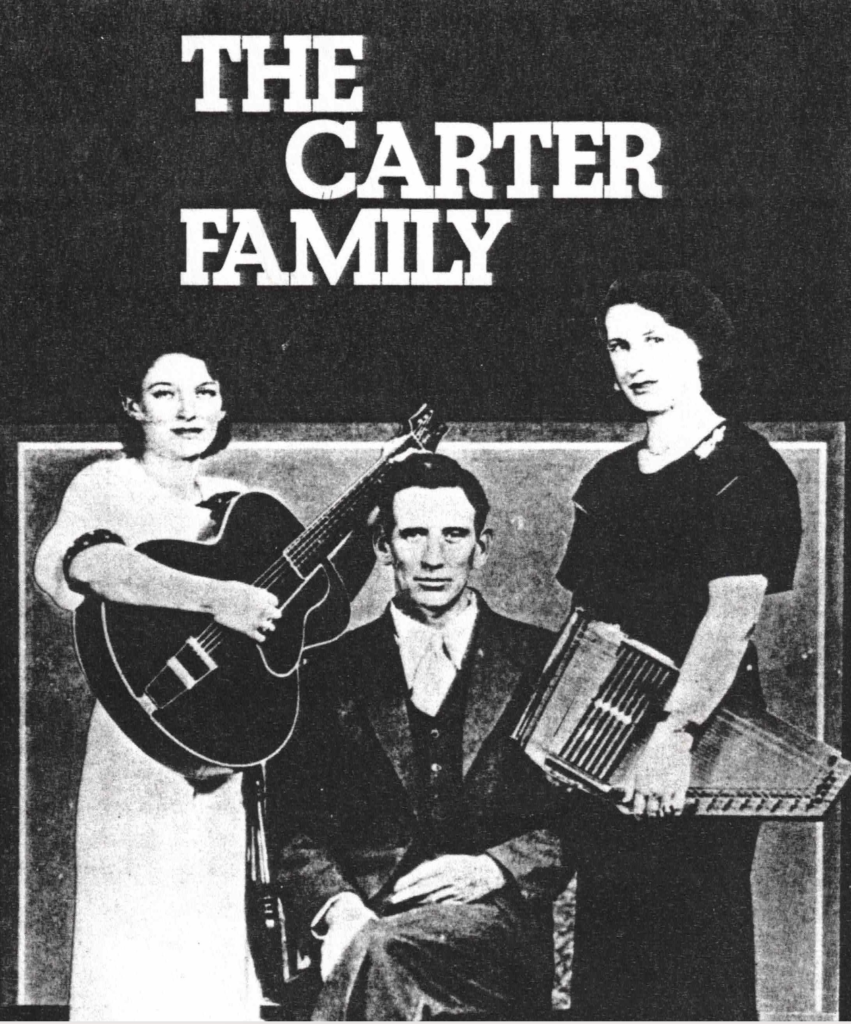
A.P. Carter came from an all-White part of Virginia; Black guitarist Leslie Riddle(s)[5] came from a part of North Carolina where the races fraternized extensively.
[5] Often spelled “Riddles,” as folks from that region often add an s here and there.
A.P. would drive from Virginia to Tennessee to pick up his musician friend. Together they scoured the Appalachians, collecting songs from Black and White alike, Carter writing down the words and Riddle memorizing the tunes.[6] Carter’s easy friendship with Riddle and non-discrimination in his traveling habits was credited by his daughter Gladys to his being “partial to poor people.”
[6] One of Carter’s song sources was Riddles’ friend Brownie McGee,
the Black guitarist who played with harmonica player Sonny Terry.
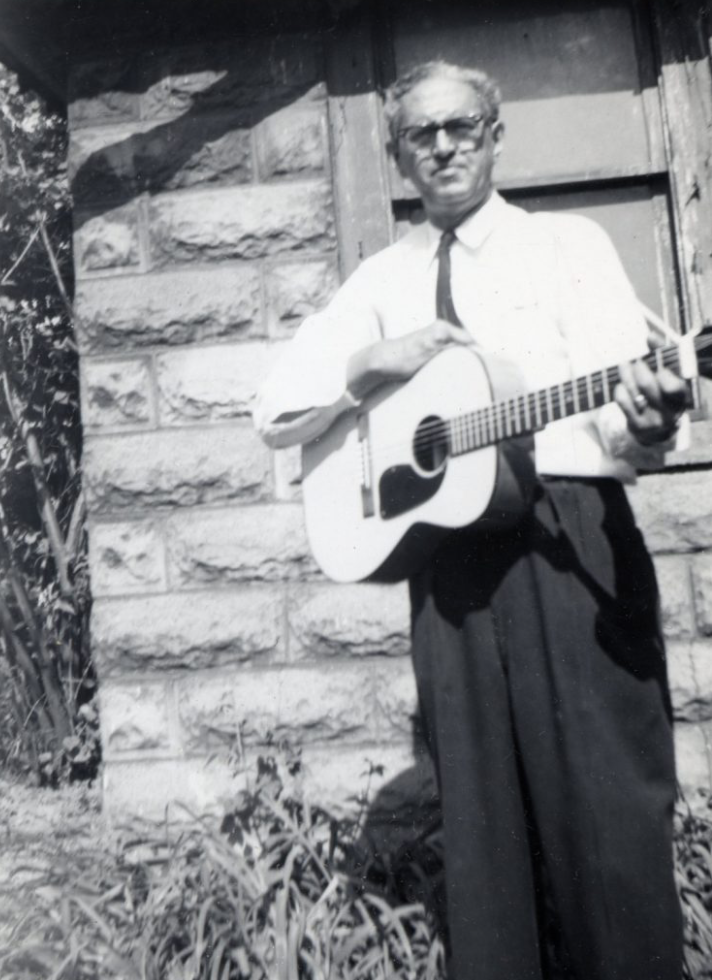
Leslie Riddle’s music spanned the gamut of styles common to musicians in the Piedmont: ragtime, blues, ballads, religious tunes, pop tunes. He played at White and Black dances, mostly Black, throughout the twenties. Many of his tunes were transmitted to the Carters.
Riddle had lost half a leg on the job at a cement plant and received nothing in return, which conjures up the specter of numerous maimed and blind Black musicians who were disabled due to lack of health care or any societal caring for their sort. This drove many to music.[xxxiii] The Carters bought him a wooden replacement. Riddle later lost the two middle fingers of his picking hand in a mysterious gun incident, and had to retrain himself on guitar.
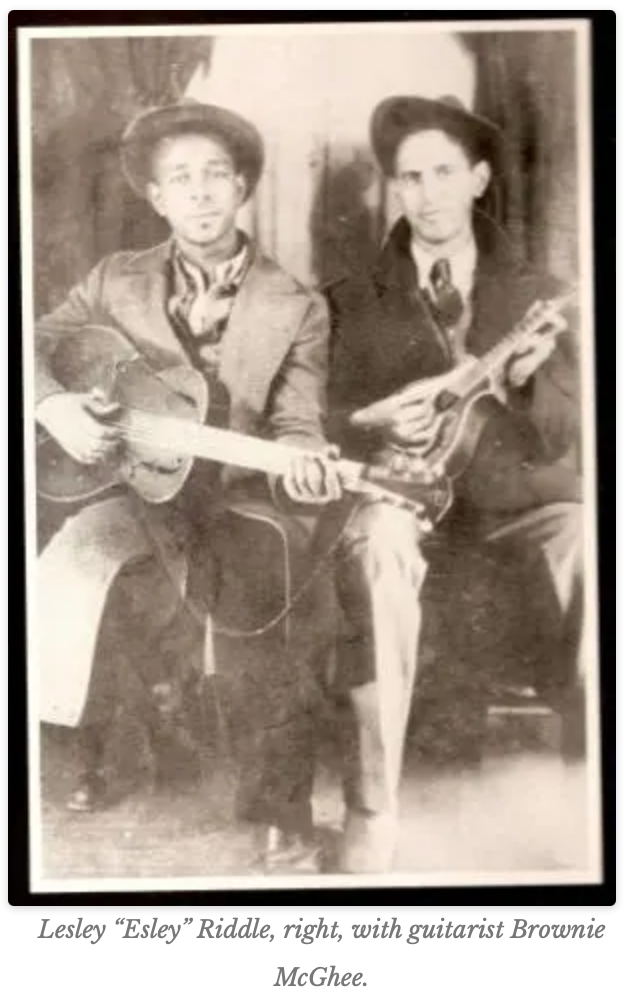
Riddle taught Maybelle Carter the melody guitar style associated with the blues, which complemented her more traditional White folk-based style. Prior to this, White folk guitarists rarely played melody, confining themselves to strumming. The playing of melody on the bass and middle strings and rhythm fills on the high ones was a banjo style, used also by Dock Boggs, who got it from Black players. Contrarily, playing melody on the high strings while picking out alternating bass patterns with the thumb was a ragtime approach she learned directly from Riddle.[xxxiv]
Maybelle’s rhythm, influenced by old-time banjo style,
included, after the bass or melody note played on the down beat, a sharp downward brush stroke played with the back of the fingernail of the index or first finger, on the upbeat. Consequently, most Carter Family songs moved against a steady upbeat or “backbeat.”[xxxv]
The economic relationship between the partners was murky if not shady. Riddle seems never to have been directly paid for his part, and in those pre-commercial days it didn’t particularly occur to him to ask. But thinking back, he accused the Carters of duplicity:
He [A.P.] was learning, but I didn’t know it. They was learning. They’d have me play a song you know, and they’d listen to it. And then when I wasn’t around they’d practice on it, then when everybody’d turn their head, they’d go and make a record…They had more sense than I did, cause along then I didn’t have enough sense to get me nothing out of it…I didn’t get nary a penny out of it.[xxxvi]
He also didn’t get much respect from history; Riddle himself recorded only once. The important points, to my mind, are the enduring ignorance among Carter and Country fans of Riddle’s role or even his existence, and the overarching ignorance about the Black sources of Country music, including the Carters’. This in spite of repeated Blacknowledgements by such as Carter and Rodgers and many more.
Riddle was, in fact, entirely forgotten until Maybelle told Mike Seeger about him in 1963. He had not owned a guitar for 18 years, but he now recorded and performed at festivals. He died of cigarettes in 1980, after final visits from the surviving Carters.
___________________________________
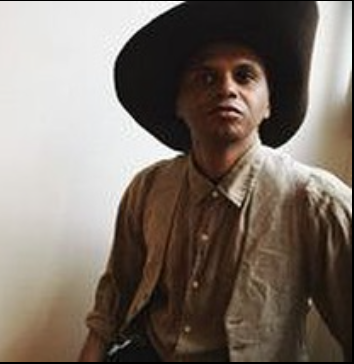
The major figure in Country music’s next era was King Hiram “Hank” Williams of Alabama. The Baptist church provided his first musical enthusiasm, and he found his music teacher while shining shoes and selling peanuts at age twelve: an old Black street singer-guitarist named Rufus Payne, aka Tee-Tot, in Greenville, Alabama. Hank frequented the Black part of town, soaking up the blues. Fifteen years later in Montgomery he would recruit Black men to take him to the local Black singers, and his audience included a significant segment of American Americans.[xxxvii]
♬SUBSTITUTION: Bill Malone suggests we give a listen to John Dudley, a Black prisoner in the Mississippi Penitentiary (Parchman), to hear a yodeling style similar to Hank’s.[xxxvii]
Hank played the honky-tonks,[7] a southern and southwestern bar scene that produced western swing and all manner of polycultural southern music. His live honky-tonk music had more blues and swing in it than what he recorded or played at the Opry.[xxxix],[8] His career was at a peak in 1953 when he died, 29 years old, of alcohol and pills taken for the pain from a congenital spinal defect that wasn’t treated at birth because his family was dirt poor. At his funeral, African-Americans filled the balcony, and a Black gospel quartet sang.[xl]
[7] Named after the turn of the century Black bars in New Orleans called tonks.
[8] As you proceed through this list of White musicians naming their Black inspirations,
recall that in 1828 Daddy Rice met a Black man dancing for his own entertainment,
and that man’s style became the main attraction in Rice’s and later minstrels’ acts.
___________________________________
THE HAWAIIAN CONNECTION
In 1916, more Hawaiian records were sold in the U.S. than of any other kind of music. Jimmie Rodgers at one point played ukulele in a Hawaiian band. Rodgers’ back-up guitarist, Cliff Carlisle, played a steel-bodied guitar flat on his lap in a bluesy style that can be heard today from the bluegrass Dobro.[xli] Military and missionary music, along with sailors’ tunes from Portugal,[9] had been imported into Hawaii, and the islanders developed their own styles based on the influx of influences. Their penchant for slide guitar was then incorporated into Country music with the development of the Dobro, and later the pedal steel guitar. (Black southerners had already played homemade slide instruments, even slide banjo.[xlii] In fact, they used to slide a bottle on a wire strung on the side of a barn.[10] This “diddly-bow” was an African retention.)[xliii]
[9] There is even a Hawaiian-Brazilian connection, by way of the Portuguese.
Imagine a samba rhythm and some percussion laying over the top
of a mellow Hawaiian slide guitar tune.
[10] Watch Lonnie Pitchford play the side of a house
on “Johnny Stole an Apple” in the film Deep Blues.
Joseph Kekuku fretted the guitar with a comb, and first recorded the style in 1909; steel guitar star Sol Hoopii worked in Los Angeles through the twenties and thirties, playing a mix of Country, jazz and Hawaiian traditional music and evolving several tunings; his favorite one became the standard for pedal steel guitars in Nashville. In the forties, many Country players—including Jimmy Helms, who played with Hank Williams—lifted their solos note for note from Hoopii’s records.[xliv]
___________________________________
We now arrive at the question of guitar picking style, and an important innovator whose name is well known among scholars and selected guitar geeks, but not elsewhere.
___________________________________
ARNOLD SHULTZ
In the Green River region of western Kentucky, centered around Muhlenberg and Ohio counties, veterans of the revolutionary war were given free land; they brought with them “free” labor, a few enslaved folks per family. Matthias Shultz was one of the veterans, and his captives received his name. A hundred years later, a child was born to the last “Shultz” to live in slavery; he would make his mark on, if not in, music.
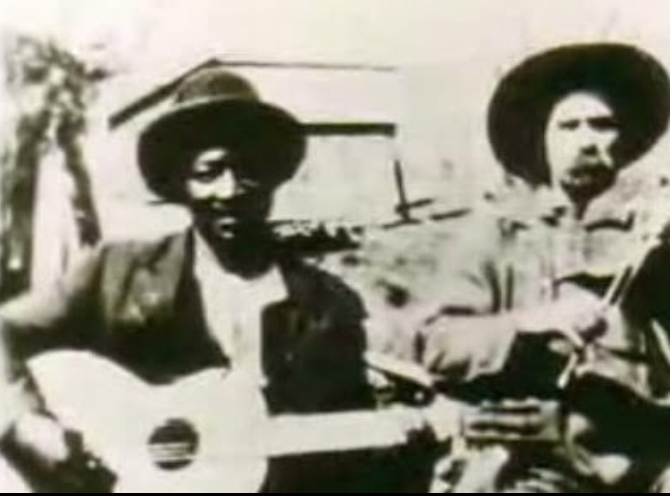
Arnold Shultz grew up playing music with his family, mostly for square dances. He began playing guitar in 1900, at age 14, and developed a thumb-style approach described by Robert Cantwell as syncopated melody, a steady, damped bass heavily accented, walking bass runs, melodic ornaments, a swinging or bouncing tempo, and, in contrast to other Country styles, sophisticated chording up the neck of the guitar, with all the strings stopped.[xlv]
After the Civil War, formerly enslaved laborers had become farmers and stevedores, and later, miners. In isolated roadless mountain areas, Blacks and Whites got along, relatively, and made music together. Arnold Shultz walked the railroad tracks of this area from around 1918 to 1931, jamming with Black and White string band players. They played hillbilly music for sure, but also blues and rags and gospel and just American music generally. Shultz also played on riverboats, and picked up a lot of styles traveling to the cities outside the immediate region; the Green River connects to the Mississippi via the Ohio, carrying outside influences including musical ones. Shultz brought them and taught them.[xlvi]
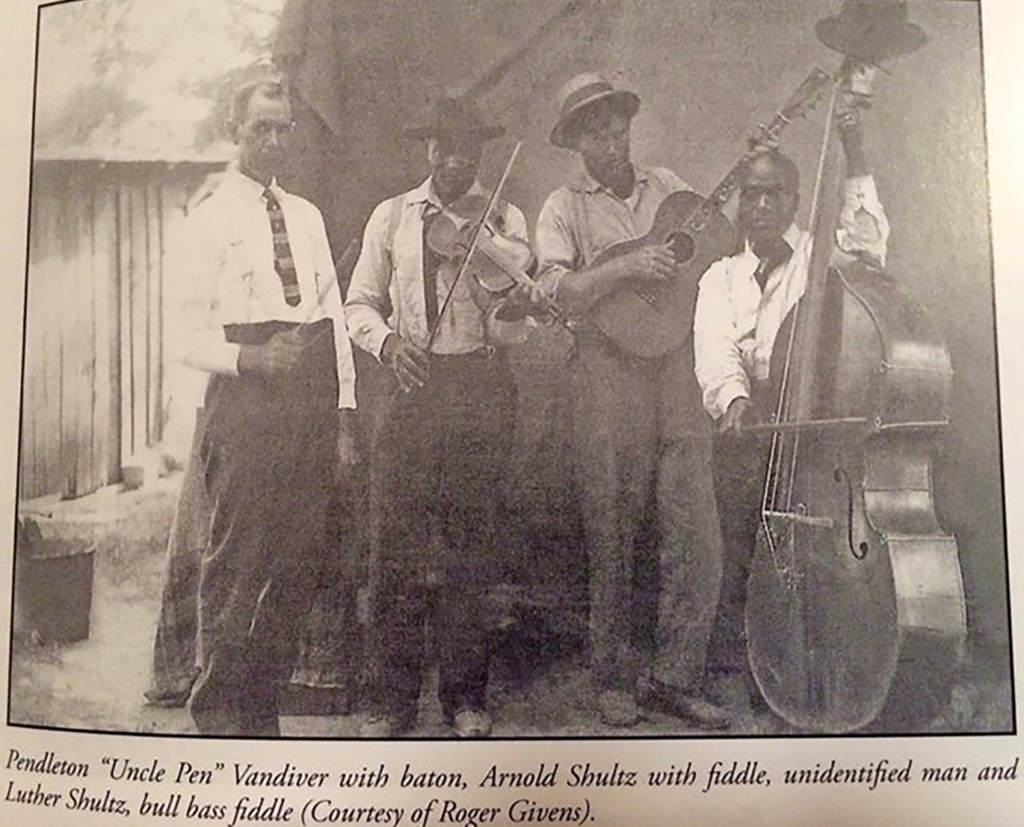
Racial interaction took many forms. One of Shultz’ playing partners was Clarence Wilson, a respected clawhammer banjo player. They had a group with a fiddler named Pendleton Vandiver—Bill Monroe’s uncle. Wilson’s daughter Flossie remembered a picnic thrown by the Black community for the Whites, at which Shultz played. It seems that Arnold broke down many racial barriers in Kentucky through the strength of his musicianship—but not all of them. Flossie says he always waited to eat till the Whites were finished.[xlvii]
One of the folks impressed by Arnold was Ike Everly, father of the Brothers. Ike’s father paid Arnold to teach Ike’s sister a guitar piece, and Ike was fascinated by Arnold’s ragtime style. Another student was Tex Atchison, who heard Shultz in a swing band in which he was the sole Black member. Atchison later replaced him in that outfit, before moving on to the Prairie Ramblers. He defined one of Shultz’s innovations:
He was the first…to play the lead and his own rhythm at the same time.[xlviii]
The bandleader, Forrest “Boots” Faught, concurred:
Yessir! Arnold was the only man I ever saw do it back in them days [1918]…And people were amazed: “Looky there—that man’s leadin’ that music on that guitar and playin’ his own accompaniment!'”[xlix]
Shultz also broke the gang out of their back-country three-chord prison, teaching them about passing chords:
Arnold Shultz says, “Throw that A in there!” And we’d start puttin that A in, and he’d say, “See how much better it sounded?”[l]
In 1920 a White guitar picker named Kennedy Jones was so impressed with Shultz’ thumb-picked style that he bought a box of thumb picks and gave them away to every guitar picker he met. This remarkable new technology spread the style through the Green River valley in a New York minute. But most directly, Shultz taught Jones, who taught 14 year-old Mose Rager on a porch in 1925.[li] Rager played with Ike Everly in the thirties. He glued together the styles of Kennedy Jones, Arnold Shultz and others, and taught it all to Merle Travis; Chet Atkins heard Travis on the radio at age 16, and it made his day. This is a piece of the story that helps explain why modern Country music is possessed of a distinctively jazzy, bluesy demeanor.
Arnold Shultz died at 45 in 1931, maybe poisoned, maybe not. Like Buddy Bolden, he was never recorded. The brilliant Merle Travis took his legacy to the outside world in 1936.
___________________________________
Guitar Stuff: Travis picking, as it is generally known, has a strong ragtime component, and features an alternating thumb-picked bass on the first and third beat. In between these beats come lighter beats, played by the thumb across the chord, tempering the traditional stiffness with a danceable bounce. All this on the bass, which is made more percussive by damping it with the heel of the hand, lightening the chokehold on the off-beats for greater bounce. Meanwhile, a melody is fingered on the high strings. As noted above, the player finds complex chords all over the neck, and applies the style to any type of music that gets in the way. As Eubie Blake said, “That’s your ragtime.”
Travis picking came to be the dominant guitar style in Country music. It came from the coal-mines of Kentucky, via coal-loads of players influenced by our man Arnold, and was perfected by Rager and Travis. But it had deeper roots: the thumb is imitating the bass notes in stride or ragtime piano, while the melody is fingered in a duplication of the piano’s right hand.
♬substitution: Listen to Travis or Atkins, followed by Jelly Roll Morton on piano or stride players like James P. Johnson or Fats Waller.
I played my primitive version of this style for years without even knowing it—I simply absorbed the feeling and found my own way of making the rhythms. It expressed my own multicultural (Country, jazz, blues, rock) heritage. I was a Shultz-Travis baby picker without even trying—and for the same reason: when you play alone, you have to play all the parts for the whole band. A middle class White boy from Seattle has roots in Muhlenberg County, Kentucky, and I’m grateful to Kennedy Jones for buying that box of thumb-picks.
Fancy picker Chet Atkins, the Country Gentleman himself, said he was raised on “a stack of records, half white and half black.” The traveling musicians of earlier times had been replaced by radio and records as the methods of cultural interpenetration. Atkins’ demigods included Belgian “Gypsy jazz” guitarist Django Reinhardt, who was also favored by Chet’s backup artists, Homer and Jethro.[lii]
♬substitution: In 1946 Atkins recorded “Guitar Blues,” with a fancy arrangement including clarinet. He did the substitution for us.
Another superb Country and folk picker, Arthel “Doc” Watson from Deep Gap, North Carolina, played with tremendous swing, and professed a great love for the blues. He played swing, rockabilly, and honky-tonk guitar before becoming a folk idol. Referring to Furry Lewis and Mississippi John Hurt, he said that “Somehow, I never could get the soul in my guitar picking that they do.”[liii]
Then there was the curious case of Jimmie Davis, who wrote and sang “You Are My Sunshine,” which helped him become Governor of Louisiana in the forties and again in the sixties. He was White, need we note. But he recorded with Blacks, including the all-Black Louisville Jug Band, and in his campaigns he was often charged with race-mixing.[11] Davis’ notable recordings in 1932 included “Red Nightgown Blues” and “Yo Yo Mama.”
[11] Back in 1924, former Governor Taylor of Tennessee had recorded
a “negro spiritual” with his quartet. (Archie Green 1965, 217)
The interaction between Black and White music in the South had been going on for many generations before recording technology appeared, and the individual modern-day stories recounted here have their counterparts, more sparsely documented, in earlier times. The style of White players hasn’t been “pure European” for over two hundred years. And the developments among Black musicians of the last century have long since spread to White musicians; the blues and rags that Country musicians play are the best examples.
With the big migrations to the northern and western cities, Blacks moved on to urban music, nursing little of the nostalgia for a simpler rural life that many Whites tended to indulge in. Rock and roll was, indirectly, a result of White folk music’s failure to move with the times: Country music, although it evolved and interacted with other musics, came to idealize the old country ways, both in word and in sound. But for next-gen White youth, country and pop were superseded by a grittier, more urban, more Afro-American music. Rock and roll was a result of Black urbanization; its White variants were able to evolve in tandem with Black urban music, intersecting and cross-pollinating frequently over the years and through all the crises of modern urban race relations.
Over time, stylistic cross-influences continue to proliferate, through recorded media and live interaction of players from various traditions, and Country music continues to be pulled over towards the Black lane. There are a multitude of crossover tunes that start in one chart and rebound into another.[liv] On “New Country” stations, a more Country-rock sort of beat is heard. Nashville session players are forever spilling over if not jumping ship into jazz. Alt-Country folks aren’t too fond of the slick Nashville style, and combine their roots in swing, blues, soul and gospel. The beat goes on.
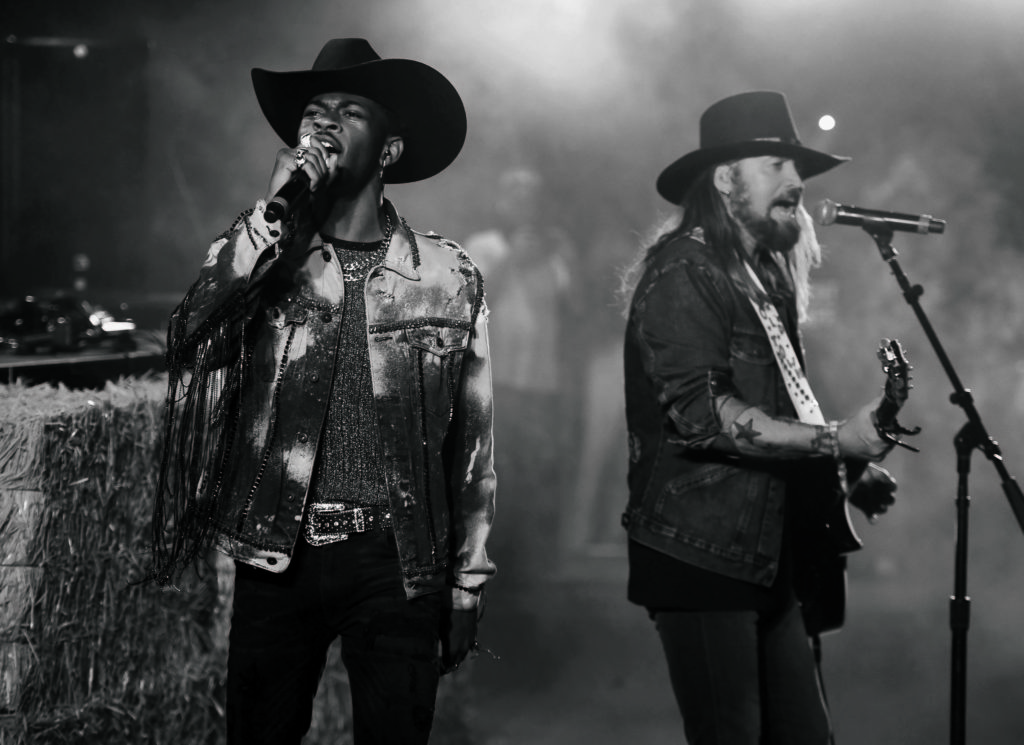
On the flip side is a stylistic adventure pursued by Black artists blending Country and Hip-Hop, like Lil Nas X (Old Town Road) and Blanco Brown (The Git Up), running parallel to the emergence of a generation of Black Country artists like Mickey Guyton, Kane Brown, Jimmie Allen, Brittney Spencer, and Willie Jones—all upending the mirage of Country as an exclusively hite zone, then or now.
Black musicians certainly do, as noted, take on White influences. Most of the forms they use are of European origin. As Barry O’Connell described the interaction, “influences moved both ways, crossing, doubling on each other, reinforcing, and playing back.”[lv] That said, from its roots to the present, Black folk musical style tends to transform the European-based forms, to pull other styles toward it because it is rhythmically (a) more sophisticated and (b) less stiff, more fluid.[12] These are two things a musician leans toward eventually, and a lot of civilians do too. Listen to several versions of the fiddle classic “Orange Blossom Special” and note the rhythmic tricks the soloists (and also the rhythm section) resort to when they tire of playing it straight. They make it Mean a Thing!
[12] Listen, for several examples, to Rhythm, Country and Blues (see Discography).
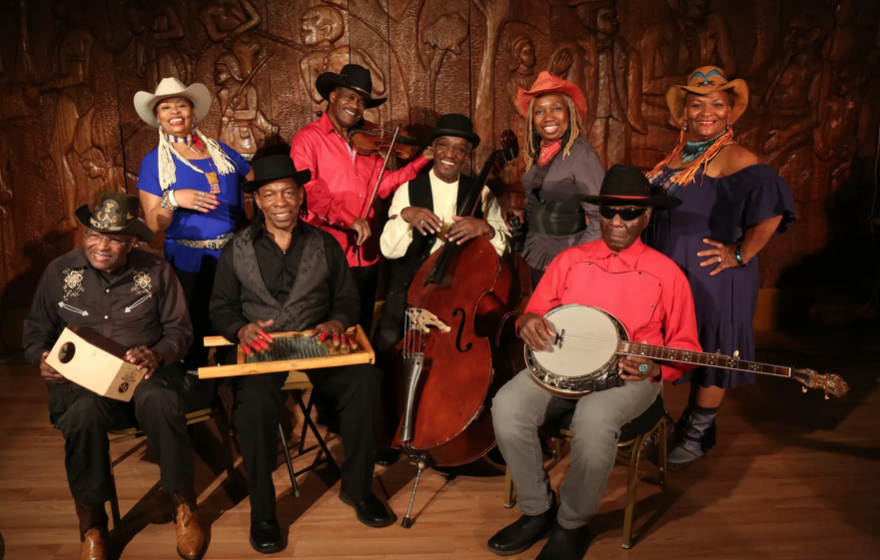
[i] Conway 1995, 138, 145.
[ii] Archie Green 1965, 214.
[iii] Robert S. Jamieson in Wolfe, 1989.
[iv] Johnson, JEMF, 1981, 77.[v] Russell, 67.
[vi] Abbott and Seroff, op. cit.., 5-8.
[vii] Tosches 1996, 112.
[viii] https://www.youtube.com/watch?v=_-s-1nKQGNY, accessed 2-15-23
[ix] Niles, Edward Abbe, “Ballads, Songs and Snatches,” column in The Bookman, 1928.
[x] Wolfe, “A Lighter Shade of Blue: White Country Blues,” in Cohn 1993, 251.
[xi] Niles, op. cit., September 1928.
[xii] Douglas Green, 1976, 55.
[xiii] Fry, Macon, “Aaron Neville,” Wavelength, May 1985, 22.
[xiv] Wolfe, Charles, in Cohn, op. cit., p 233-37.
[xv] Wolfe, op. cit.., 262.
[xvi] Douglas Green, 1976, 50.
[xvii] Lightfoot 2003, 187.
[xviii] Cantwell, 79.
[xix] Wolfe, op. cit.., 242.
[xx] Clarke, 145-56.
[xxi] Malone 1968, 22.
[xxii] John Cohen, 1964.
[xxiii] Russell, 51.
[xxiv] Daniel 1990, 7.
[xxv] Lipsitz 1994, 312.
[xxvi] Cantwell, 52.
[xxvii] Norman Cohen 1969, 235-36.
[xxviii] Cohen, Norm, “Early Pioneers,” in Malone and McCulloh, 1975, 33.
[xxix] Schlappi 1978, 28-30, 107.
[xxx] Archie Green 1965, 217.
[xxxi] Winans, Robert, “The Folk, the Stage, and the Five-String Banjo in the Nineteenth Century,” Journal of American Folklore 89(1976),407-37.
[xxxii] Niles, Introduction and notes, in Handy, 1972, 17.
[xxxiii] As noted by O’Connell in his monograph.
[xxxiv] Lightfoot 2003, 181.
[xxxv] Cantwell, 56.
[xxxvi] Interview with Mike Seeger, quoted in O’Connell, 9.
[xxxvii] Flippo, 21-23, 50, 70.
[xxxviii] Malone 1968, 233. Dudley is heard on The Blues Roll On, Atlantic Records, No. 1352, good luck.
[xxxix] Bane, 87.
[xl] Perry, 78.
[xli] Douglas Green, 1976, 55-57.
[xlii] Spottswood, Richard, liner notes for The Slide Guitar: Bottles, Knives and Steel, Columbia Roots and Blues Series, 1990.
[xliii] Titon, 45.
[xliv] Uncredited liner notes from Sol Hoopii: The Master of the Hawaiian Guitar, Rounder, 1977,1991, and Obrecht, Jas, “Slide Routes: The Honolulu-Hollywood Connection,” Guitar Player, August 1994, 94.
[xlv] Cantwell, 31.
[xlvi] This section is drawn from Lightfoot, “A Regional Musical Style: The Legacy of Arnold Shultz,” and Lawrence, “Arnold Shultz: Godfather of Bluegrass?”
[xlvii] Lawrence, JEMF, 7.
[xlviii] quoted in Lightfoot, 132.
[xlix] Lightfoot, 132.
[l] Lightfoot, 132.
[li] Lawrence, Bluegrass Unlimited, 41.
[lii] Kienzle, 46.
[liii] Bane, 82.
[liv] See Francis, Billboard, for a number of examples from 1995.
[lv] O’Connell, 30.
